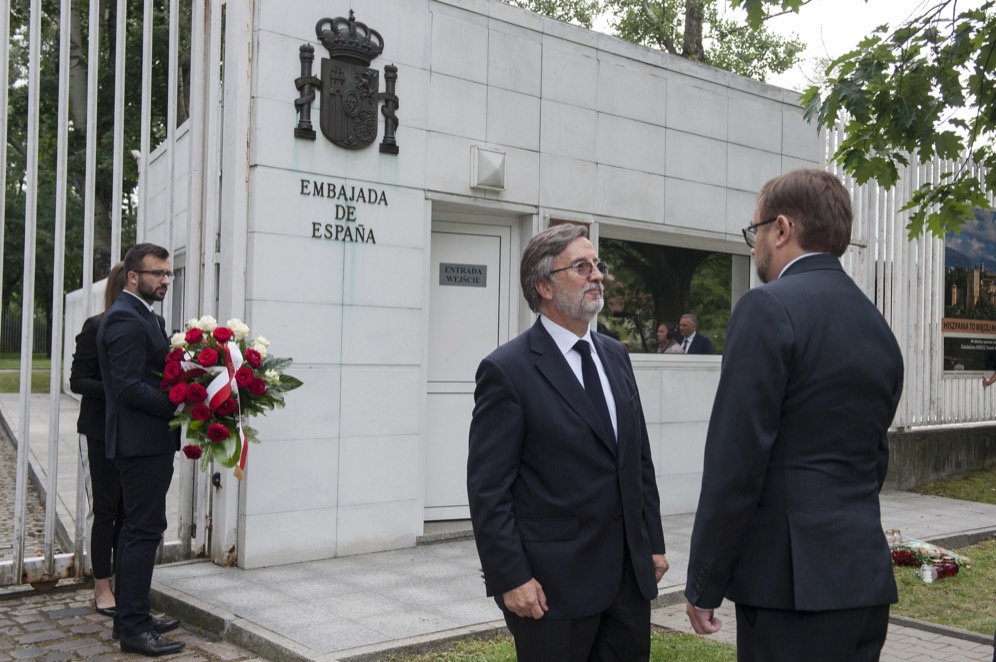There is something particularly frightening about the people who turn a car or a lorry into a weapon. These are everyday objects that we see and do not generally fear and yet, in moments, they can be weaponised and kill dozens of people. Deliberately. Motor vehicle accidents are one thing, the wanton mowing down of crowds of people are something completely different.
Most recently, this was perpetrated by a white supremacist in Charlottesville in the US but, yesterday, the atrocity took place in Las Ramblas, a popular tourist area in Barcelona. Eight hours later, in Cambrils, a seaside town in Spain, five people wearing fake suicide belts ploughed into pedestrians with their vehicle and were shot dead by police.
This takes us to the seventh vehicle attack this year in Europe, the previous ones taking place in Sweden, the UK (twice) and France (twice). The five attackers in Cambrils were shot dead by police, while the driver from the Barcelona attack ran from the scene and has not yet been found.
Biggest terrorist attack since Madrid, 2004
The Barcelona attack is the biggest terrorist attack in Spain since the train bombing in Madrid in 2004, where 191 people died. 13 people died in Barcelona yesterday and around 100 more were injured while, in Cambrils, one woman died and six other people were injured.
The victims of the Barcelona attack are thought to be from at least 34 different countries. Similar to the attacks in London, tourists and people living in the country who are originally from other places were caught up in the violence as well as locals. The attack also took place during Barcelona’s ‘circuit season’, a two-week long series of parties that attracts tens of thousands of gay and bisexual men to the city. Whether homophobia led to this particular target and timing being chosen remains to be seen.
The van that was turned into a murder weapon reportedly drove in a zig-zag shape down the tourist-filled street, hitting as many people as possible.
Who has been arrested?
Four people have been arrested, three of whom have been confirmed to be men including Driss Oukabir, the brother of the alleged driver of the van in Barcelona yesterday. The man reported to have been the Barcelona driver, Moussa Oukabir, is thought to be just 17 years old. Speculation is rife that attacks with gas canisters were also planned, following an incident with an exploding gas canister in a house in Alcanar on Wednesday. One person died during what were perhaps preparations for a planned attack.
Did the police fail?
Daesh, the so-called ‘Islamic State’ has publicly taken responsibility for the attacks. Frank Gardner, the BBC’s security correspondent, reports that this group of at least eight people planning joint attacks goes against the general Daesh advice of avoiding large groups to prevent detection.
Whether the police and security services were remiss in not knowing about the plans in advance and avoiding their perpetration is something that analysis will discover over time, but Gardner said, “It suggests both an element of careful planning by the perpetrators and also a failure of intelligence by the normally-vigilant Spanish authorities. Spain has not experienced anything like this since al-Qaeda staged multiple bombings in Madrid in 2004”.
If it is true that the perpetrators were planning bigger attacks, including those with gas canisters, it could be that even worse carnage has been foiled.
The attackers in Cambrils were all shot dead by police (including, according to some sources, the Barcelona attacker, though this has not been confirmed). While a trial, verdict and sentencing from a judge and jury are always preferable to death by cop, the one police officer who apparently shot four of the five men in fake suicide vests is being praised for their service.
Not afraid?
Today, crowds gathered in Plaça de Catalunya and moved down Las Ramblas boulevard to declare “No tinc pur!” or “I am not afraid”. An improvised shrine had already been built to pay tribute to the victims of the violent attack and the Spanish Prime Minister, Mariano Rajoy, spoke to the gathered people, announcing three days of mourning and saying, “We have received blows like this in recent years, but we also know that terrorists can be beaten”.
The Catalan president, Carles Puigdemont and King Felipe Vi were also present at the vigil.
But, despite claims of no fear, it is understandable and natural that some people do increasingly feel afraid, especially in crowds and large cities. When the weapons are day-to-day objects like cars and vans, it is especially difficult to identify who an attacker might be and when he might strike. It’s all very well saying “If you change your everyday activities, then the terrorists have won!” but, if you are struck down with fear and cannot face the place that saw hundreds bleeding and battered, that is not an unreasonable position to be in.
Photo: Kancelaria Premiera/Creative Commons

